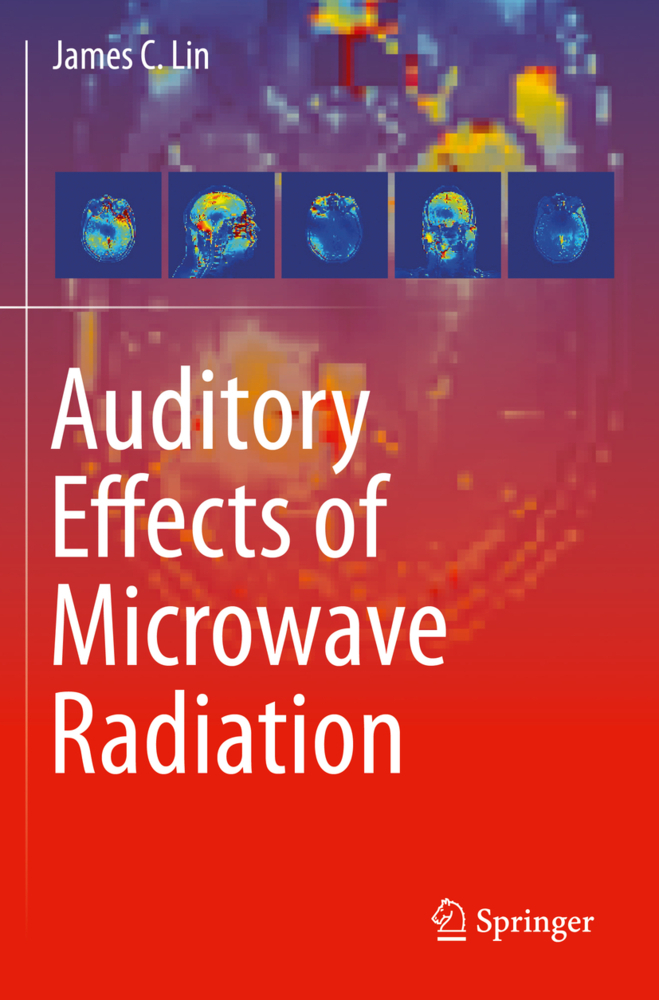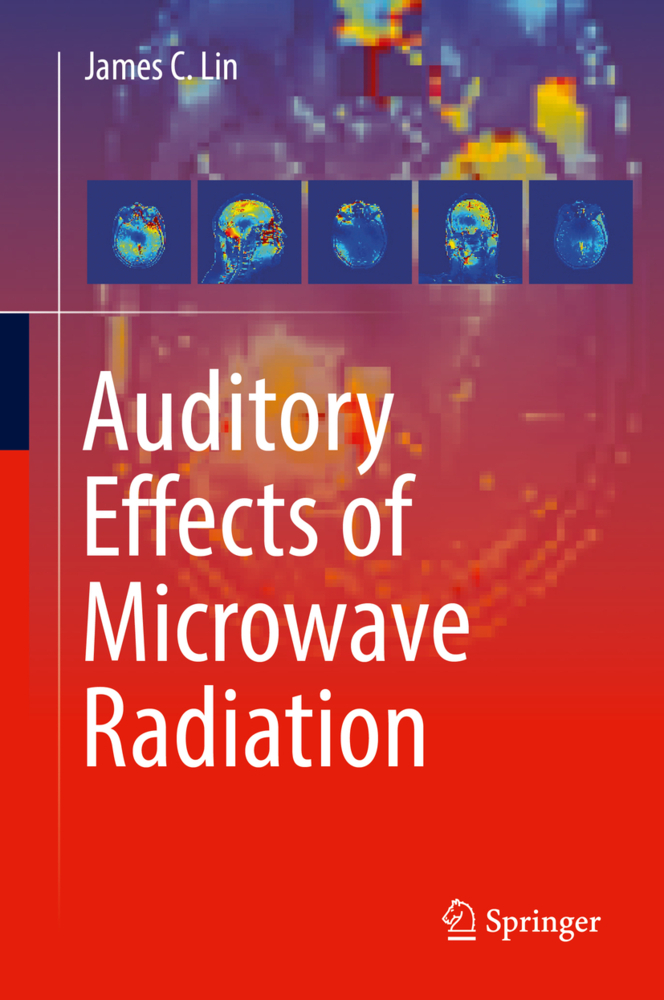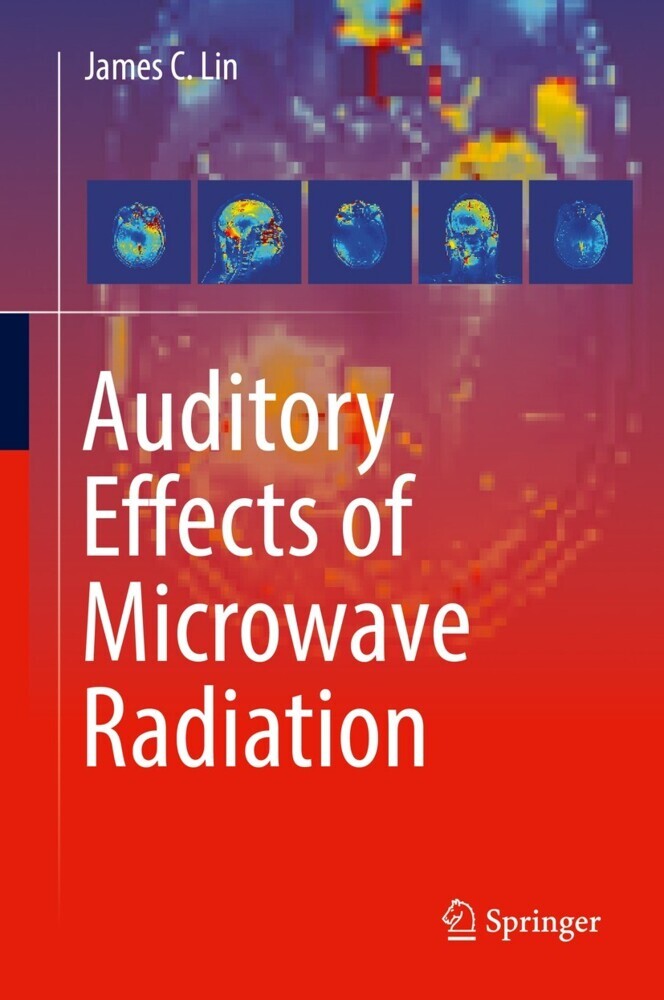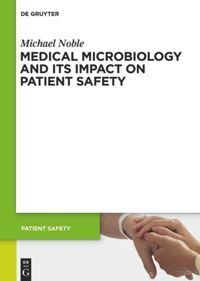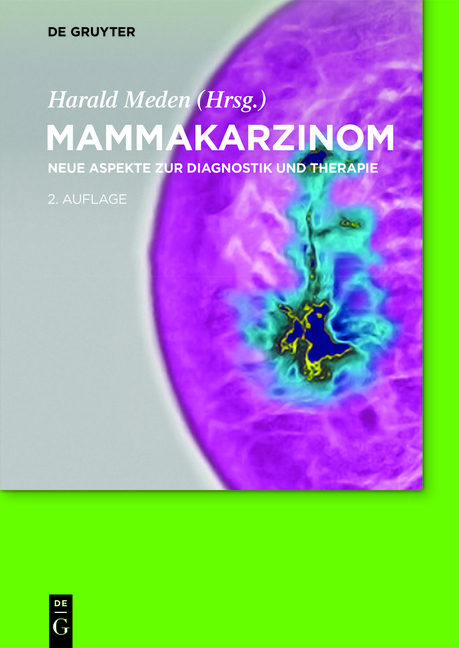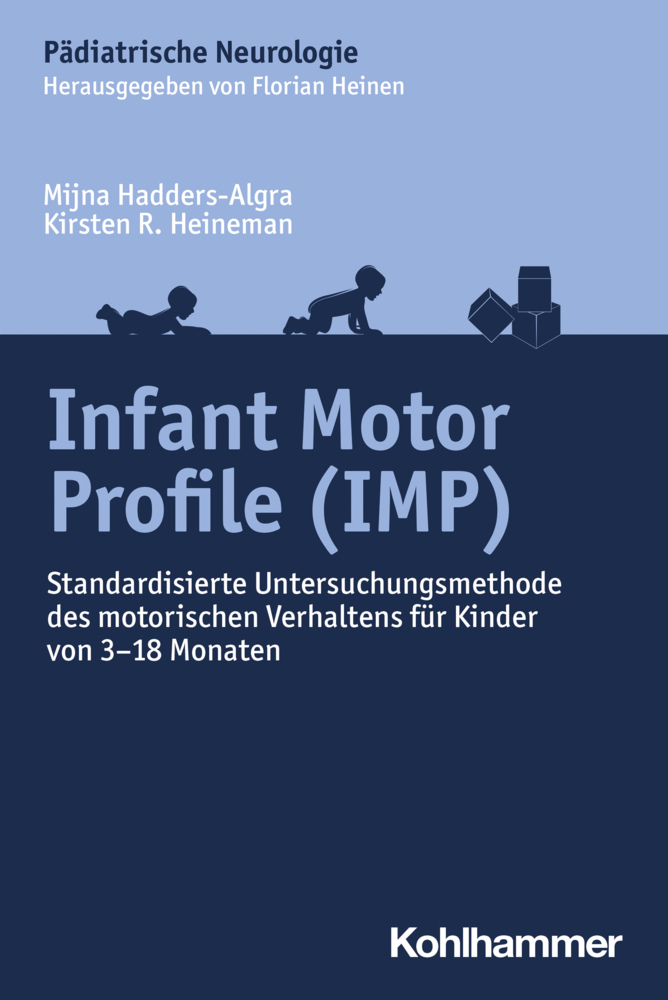Auditory Effects of Microwave Radiation
Auditory Effects of Microwave Radiation
AUDITORY EFFECTS OF MICROWAVE RADIATION
James C. Lin
University of Illinois at ChicagoChapters
1. Introduction
1.1 Electromagnetic Radiation and Spectrum
1.2 Microwave Technology and Applications
1.2.1 Microwave Diathermy
1.2.2 Microwave Ablation Therapy
1.2.3 Hyperthermia Treatment of Cancer
1.2.4 Microwave Ovens
1.2.5 Magnetic Resonance Imaging
1.2.6 Modern Microwave Radars
1.2 Auditory Effects from Pulsed Microwave Exposure
1.3 A Diplomatic Affair
1.4 Organizing Principle of the Book
References
2. Principles of Microwave and RF Exposure
2.1 The Maxwell Equations
2.2 The Wave Equation
2.3 Boundary Conditions at Material Interfaces
2.4 Energy Storage and Power flow
2.5 Plane Waves and Far-Zone Field
2.6 Polarization and Propagation of Plane Waves
2.6.1. Plane Waves in Free Space
2.6.2. Plane Waves in Lossy or Biological Media
2.7 Reflection and Transmission at Interfaces
2.8 Refraction of Microwave and RF Radiation
2.9 Radiation of Electromagnetic Energy
2.9.1 The Short Dipole Antenna
2.9.2. Near-Zone Radiation
2.9.3 Antenna Receiving Characteristics
References
3. Brain Anatomy and Auditory Physiology
3.1 Anatomy and Physiology of the Human Brain
3.2 The Human Auditory System
3.2.1 External and Middle Ears
3.2.2 The Inner Ear
3.2.3 Cochlear Mechanical Activity and Transduction
3.2.4 Cochlear Microphonics and Electrical Potentials
3.2.5 Action Potentials of the Auditory Nerve
3.2.6 Central Auditory Nuclei and Pathways
3.3 Perception of Sound and Pressure
3.3.1 Transmission of Sound Pressure3.3.2 Loudness and Pitch
3.3.3 Sound Localization
3.3.4 Masking Effect3.3.5 Deafness and Hearing Loss
3.3.6 Hearing Acuity and Audiometry
References
4. Microwave Property of Biological Materials
4.1 Frequency Dependence of Dielectric Permittivity
4.2 Relaxation Processes
4.2.1 Low-Loss Dielectric Materials
4.2.2. Lossy Dielectrics at Low Frequencies
4.2.3. Biological Materials4.3 Temperature Dependence of Dielectric Properties
4.4 Measured Tissue and Modeled Permittivity Data
4.4.1 Permittivity of Water
4.4.2 Measured Tissue Permittivity Data
4.4.3 Debye Modeling of Tissue Permittivity Data
4.4.4 Temperature Dependence of Measured Tissue Permittivity
4.4.5 Dielectric Permittivity at Low Temperatures
References
5. Dosimetry and Microwave Absorption
5.1 Dosimetric Quantities and Units
5.2 Boundary of Planar Interfaces
5.3 Multiple Tissue Layers
5.4 Influence of Orientation and Polarization
5.5 Spheroidal Head Models
5.6 Absorption in Anatomical Models
5.6.1 The Visible Human Anatomical Model5.6.2 Family of Anatomical Computer Models
5.7 Computing SAR in Anatomical Models
5.7.1 The FDTD Algorithm
5.7.2 SAR in Anatomical Human Head in MRI or Near-Zone Exposures
5.7.3 SAR in Anatomical Body Exposed to Plane Waves
References
6. The Microwave Auditory Effect
6.1 A Historical Perspective
6.2 Psychophysical Studies in Humans
6.2.1 Microwave Pulses at 1245 MHz6.2.2 Microwaves Pulses at 2450 MHz
6.2.3 Microwaves Pulses at 3000 MHz
6.3 Threshold Power Density for Human Perception
6.3.1 Field Tests of Adult Humans with Normal Hearing
6.3.2 Laboratory Study of Human Adults with Normal Hearing
6.4 Loudness of Human Perception
6.5 Behavioral Study in Animals
6.5.1 Discriminative Control of Appetitive Behavior
6.5.2 Pulsed Microwave as A Cue in Avoidance Conditioning
6.6 Neurophysiological Study in Animals
6.6.1 Brainstem Evoked Response
6.6.2 Primary Auditory Cortex
6.6.3 Central Auditory Nuclei
6.6.4 The Eighth Cranial Auditory Nerve
6.6.5 Cochlear Round Window
6.6.6 Cochlear Microphonics
6.6.7 Brainstem Nuclei Ablations on Auditory Evoked Responses
6.6.8 Manipulation of Middle and Outer Ears on BER Potentials
6.6.9 Brain Tissue as Site of Interaction
6.7 Animal Thresholds, Noise, and BER Potentials
6.7.1 Eletrophysiologic Threshold Determination in Animals
6.7.2 Effect of Ambient Noise Level
6.7.3 Microwave BER Recordings
References
7. Mechanisms of Microwave to Acoustic Energy Conversion
7.1 Site of Microwave to Acoustic Energy Transduction
7.2 Possible Mechanisms of Interaction
7.2.1 Radiation Pressure
7.2.2 Electrostrictive Force
7.2.3 Thermoelastic Stress
7.3 Analysis of Possible Transduction Mechanisms
7.3.1 Computation of Radiation Pressure
7.3.2 Electrostrictive Force Calculation
7.3.3 Thermoelastic Pressure Generation
7.4 Biophysical Properties of Biological Materials
7.5 Comparison of Possible Transduction Mechanisms
References
8. Thermoelastic Pressure Waves in Canonical Head Models
8.1 Analytic Formulation of Microwave Induced Thermoelastic Pressure
8.1.1 Microwave Absorption
8.1.2 Temperature Elevation
8.1.3 Thermoelastic Equation of Motion
8.2 Pressure Wave in Stress-Free Brain Spheres
8.2.1 Thermoelastic Pressure for Ft (t) = 18.2.2 Rectangular Pulse-Induced Pressure in Stress-Free Sphere
8.3 Pressure in Brain Spheres with Constrained Surface
8.3.1 Induced Thermoelastic Pressure for Ft (t) = 1
8.3.2 Rectangular Pulse-Induced Pressure for Constrain Surfaces
8.4 Other Absorption Patterns and Pulse Waveforms
8.5 Calculated and Measured Frequencies for Spherical Head Models
8.5.1 Theoretically Predicted Frequency of Acoustic Pressure Waves
8.5.2 Measured Frequency in Spherical Head Models
8.6 Calculated Pressure Amplitude and Displacement
8.6.1 Stress-Free Boundary
8.6.2 Constrained Boundary
8.6.3 Pressure Wave Dependence on Pulse Width and Pulse Shape
8.7 Pressure Wave Measurements in Animal Heads
8.7.1 Pressure Sensing in Animal Head and Frequency Analysis
8.7.2 Comparison of Predicted and Measured Sound Frequency
8.7.3 Pressure Wave Propagation Measurement in Cat's Head
8.8 Comparison of Predicted and Measured Response Characteristics in Human and Animal Heads
8.8.1 Dependence of Response Amplitude on Microwave Pulse WidthReferences
9. Computer Simulation of Pressure Waves in Anatomic Head Models
9.1 FDTD Formulation for Microwave Thermoelastic Pressure Waves
9.1.1 Maxwell's Electromagnetic Equations
9.1.2 Biological Heat Transfer Equation
9.1.3 Thermoelastic Equation of Motion
9.1.4 Modulated Rectangular Pulse Functions
9.2 Sound Pressure Waves Induced by RF Pulses in MRI Systems
9.2.1 Homogeneous Spherical Head Model
9.2.2 Anatomical Head Model
9.2.3 Thermoelastic Pressure Waves in Anatomical Head Model
9.2.4 MRI Safety Guidelines9.2.5 Human Subjects Inside MRI RF Head Coils
9.3 Pressure Waves in Human Heads from Far Field Exposure
9.4 Whole-Body Model Exposed to Plane Waves
References
10. Applied Aspects and Applications
10.1 Microwave Thermoacoustic Tomography and Imaging
10.1.1 Microwave Thermoacoustic Imaging
10.1.2 Microwave Thermoacoustic Tomography
10.1.3 Further Investigations of MTT
10.1.4 Recent Developments in MTT
10.1.5 Other MTT Application Domains
10.2 Reports of Diplomatic Personnel's Sonic Attacks
10.3 Directed Messaging and Mind Control
10.4 Microwave Signal at the Moscow Embassy
References
Index
Lin, James C.
| ISBN | 978-3-030-64546-5 |
|---|---|
| Artikelnummer | 9783030645465 |
| Medientyp | Buch |
| Auflage | 1st ed. 2021 |
| Copyrightjahr | 2022 |
| Verlag | Springer, Berlin |
| Umfang | XIII, 348 Seiten |
| Abbildungen | XIII, 348 p. 203 illus., 132 illus. in color. |
| Sprache | Englisch |

